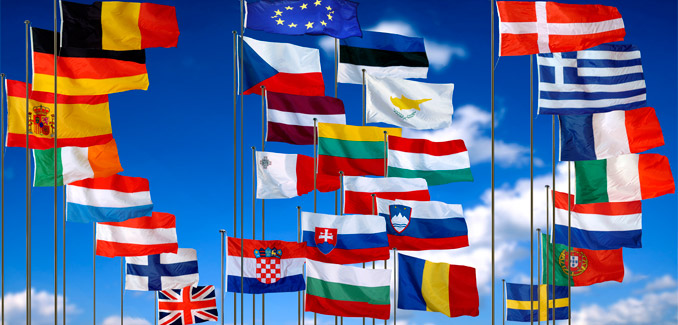Ireland celebrates tenth anniversary of largest ever EU Enlargement
On 1 May 2004 ten new countries joined the European Union in its largest ever enlargement: Cyprus, the Czech Republic, Estonia, Hungary, Latvia, Lithuania, Malta, Poland, Slovakia and Slovenia. Ireland, which held the Presidency of the European Union at the time, celebrated the enlargement with a special Day of Welcomes in the Phoenix Park. They were followed two years later by the entry of Romania and Bulgaria. With Croatia’s accession last year, there are now 28 EU Member States.
Seamus Heaney wrote a poem specially commissioned for the occasion titled Beacons at Bealtaine.
Ireland’s trade with Central and Eastern Europe has gone from strength to strength:
- In 2013, Ireland merchandise exports to the ten countries that joined in 2004 were worth over €1.7 billion. Taking into account the three further countries that have since joined the EU (Romania, Bulgaria and Croatia), the figure rises to nearly €2.2 billion - three times what it was in 2004
- In 2013, our goods exports to the region were up 12.3% from 2012, with particularly strong growth recorded for the Czech Republic (up 36.7%) and Poland (up 20%)
- Combined exports of goods and services to Central and Eastern Europe are worth over €4.3 billion per year
- We export as much merchandise to the 11 countries of Central and Eastern Europe as we do to China and Brazil combined
- Almost one quarter of our exports to Central and Eastern Europe is from indigenous Irish companies – a high rate compared to Western Europe. Poland was Ireland’s tenth largest market for exports from indigenous Irish companies
- The 11 countries of Central and Eastern Europe form a market of over 105 million people
- An estimated 138,000 tourists come to Ireland from Central and Eastern Europe each year
In the last ten years, Ireland has been changed by the arrival of many people from the ten member states on our shores:
- The most spoken first language in Ireland, after English, is Polish
- In the 2011 census, there were 115,000 Poles, 35,000 Lithuanians, 20,000 Latvians, 20,000 Slovaks and 18,000 Romanians living in Ireland
- People from the ten EU countries account for around 5% of the Irish population
- Students can now sit the Leaving Certificate in Latvian, Lithuanian, Romanian, Polish, Estonian, Slovak, Czech, Bulgarian, Hungarian and other languages
- There are around 60 flights a week between Poland and Ireland alone and you can fly to 12 Polish cities directly from Dublin
Irish culture is flourishing in the ten countries:
- James Joyce’s Leopold Bloom was of Hungarian origin. Every year, the Hungarian town of Szombathely celebrates Bloomsday
- Shaun Davey’s Voices from the Merry Cemetery is based on the celebrated epitaphs on the gravestones of the Maramures cemetery in northern Romania
- Irish dancing is growing in popularity in Slovakia with several Irish dancing schools established around the country including in Bratislava, Košice and Banská Bystrica
- The first ever St Patrick’s Day parade in Malta took place last year and this year the Maltese Bombi Arch was ‘greened’ for the first time
- The people of Bulgaria continue to honour the memory of Limerick-born James Bouchier, who championed Bulgaria’s cause, and died in Sofia in 1920
- The enduring popularity of Irish music in Lithuania was again evidenced by the response to Clannad’s recent concert in Vilnius
- About 30,000 Irish football fans travelled to Poland for the Euro 2012 football championships. Their exuberance and humour made an extremely favourable impression on the host population and media, particularly in Poznan and Gdansk.


